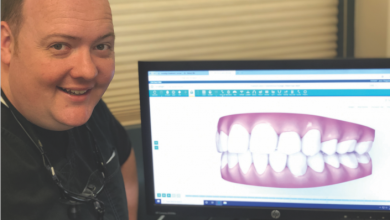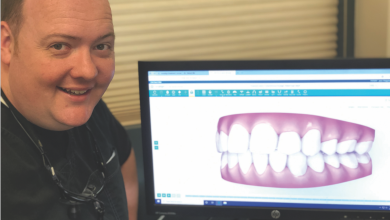A Case Study
Last month my article focused on some of the basic disease processes involved in the formation of cavities and the development of periodontal disease. This month I would like to share a case history or two that illustrate these processes and how quickly the oral environment can change from health to disease.
We’ll call our first patient, “X”. Dental health is important to X and he has been a regular visitor to the dental office for many years. One year, shortly after his regular exam and cleaning visit, he developed a condition for which his physician recommended a popular throat lozenge as a palliative remedy. X followed the recommendation of his physician and found it to be very helpful for his condition and he was happy.
What X did not think about was that the throat lozenge was sweetened with sugar. He was unaware of the Stephan Curve and the development of an acidic environment associated with the consumption of sugar. He was also unaware that such acid levels dissolve enamel and dentin, resulting in holes, or cavities, in the teeth.
A compounding element is the fact that X already had a lot of dental work and recession that exposed the root surfaces of his teeth. Any dental work (fillings, crowns, etc.) creates a material junction that is more susceptible to breakdown than the original, unaffected tooth structure. Root surfaces are softer and more porous than enamel surfaces and, therefore, decay more easily.
So, at X’s next dental exam, approximately 9-10 months after he began using the throat lozenges, he received some very bad news. As I examined his teeth, there were 10-11 cavities. I thought, “This is crazy! X is very regular and maintains good home care. What is going on?!?!” As we sat and talked about what I was seeing and if there had been any changes in health, diet, medications, etc. since his last exam, he mentioned that he had been using the lozenges.
I immediately knew what had happened. I educated X about the Stephan Curve and sugar consumption, and while the damage had already been done, he learned what changes in behavior would lead to better outcomes for him in the future and he is better prepared to care for his mouth.
Periodontal disease, as we learned last month, is problematic because it doesn’t become symptomatic until the later stages when it is more difficult to treat. It is not unusual for a patient who has been at a borderline condition to come back in and be significantly worse at their annual exam. This is due to the fact that once a pocket becomes 5-6mm deep, it can no longer be cleaned effectively at home. So, if a patient has a visit for a regular exam and cleaning and it is found that s/he is borderline for periodontal disease and s/he doesn’t maintain the discipline required to employ the home care practices that will effectively prevent disease, a borderline pocket can easily move to a 6-7mm pocket since they cannot effectively clean into the deeper pocket.
It is always disappointing to share such news with patients. Why? For me, there are several reasons. First, we all have limited resources and it is much more enjoyable to take a vacation, to get a new toy, or just pay down debt than it is to spend money on dental care. In my 12 years of practice I have not met anyone who enjoys spending money on dental work – there are those who value and appreciate it, but not many that actually enjoy it. Second, the cost of dental care places a real economic impact on most of us. Good, high quality dental care, like anything else that is done right, costs money. For many, it is a choice between ongoing necessities and surprise necessities. And it is hard to give people such news.
My hope is that we can learn from the information given to employ preventive strategies. As I mentioned last month, it is much easier to prevent these problems than it is to treat them. Regular visits to your dental office for professional cleanings and examination and evaluation of your teeth, gums, and bone are essential to maintaining excellent oral health and preventing these common maladies. If you are concerned about your dental health, please contact your dentist today. If you do not have a dentist, please consider Today’s Dentistry – we’ll take great care of you!


